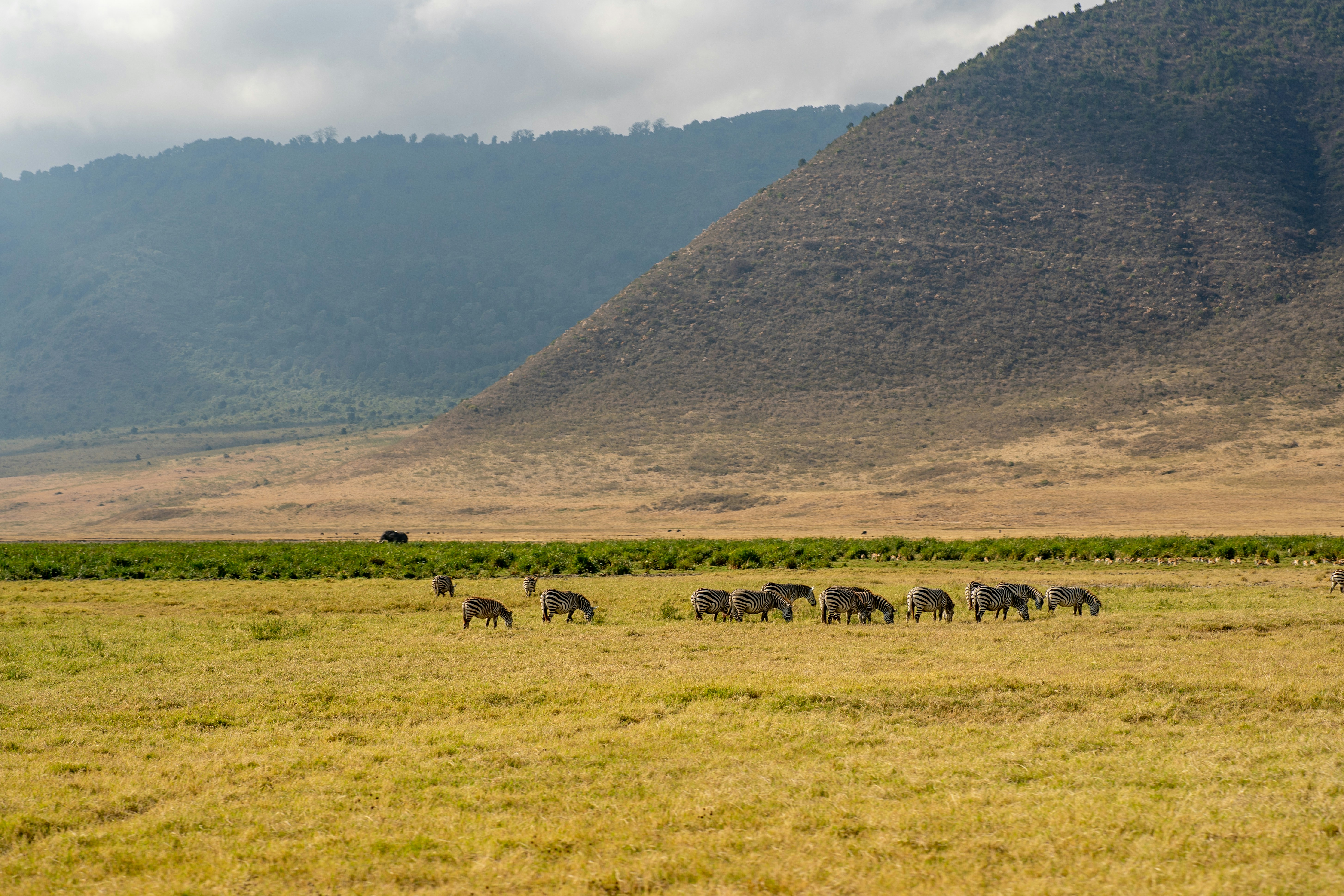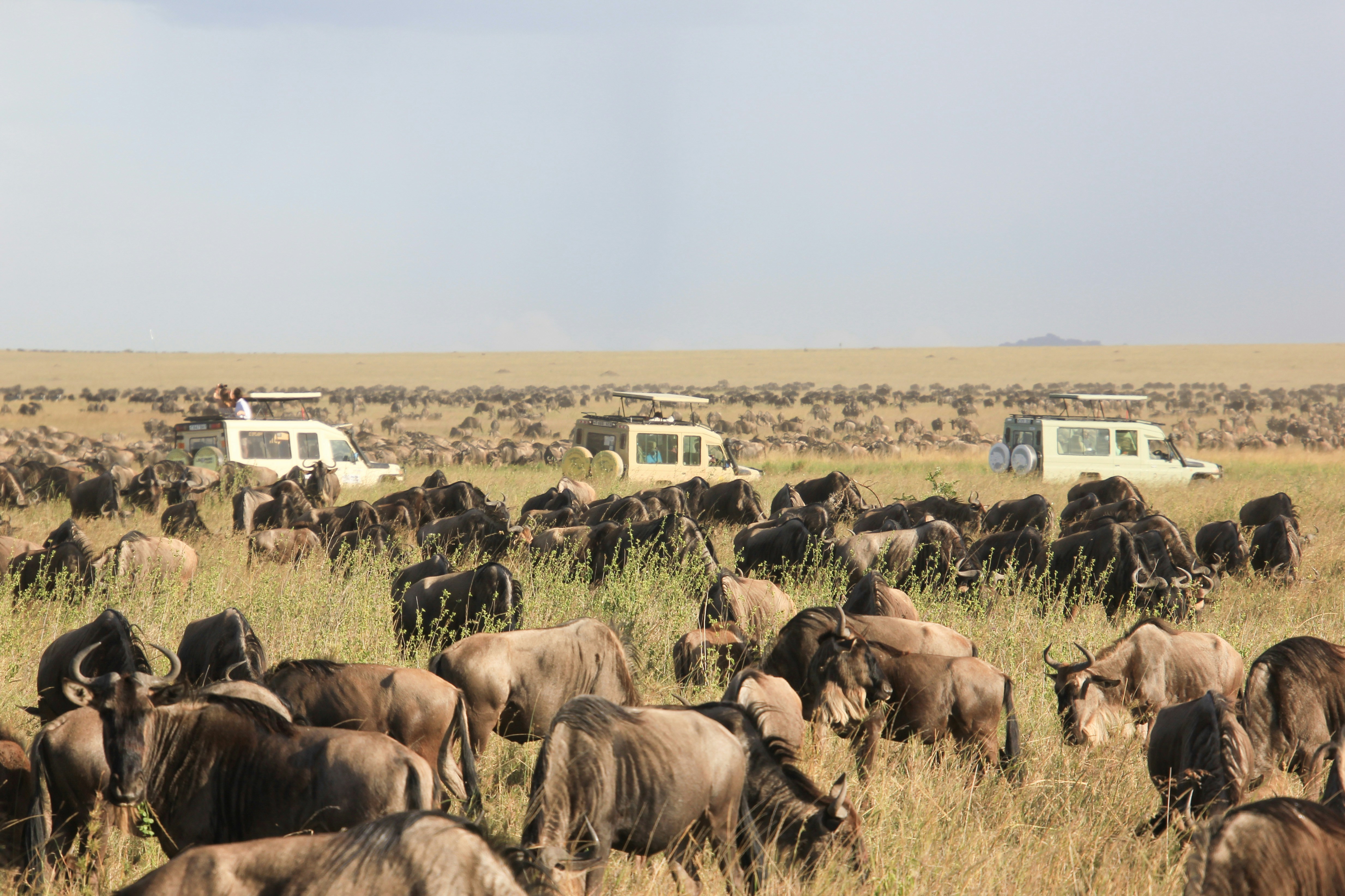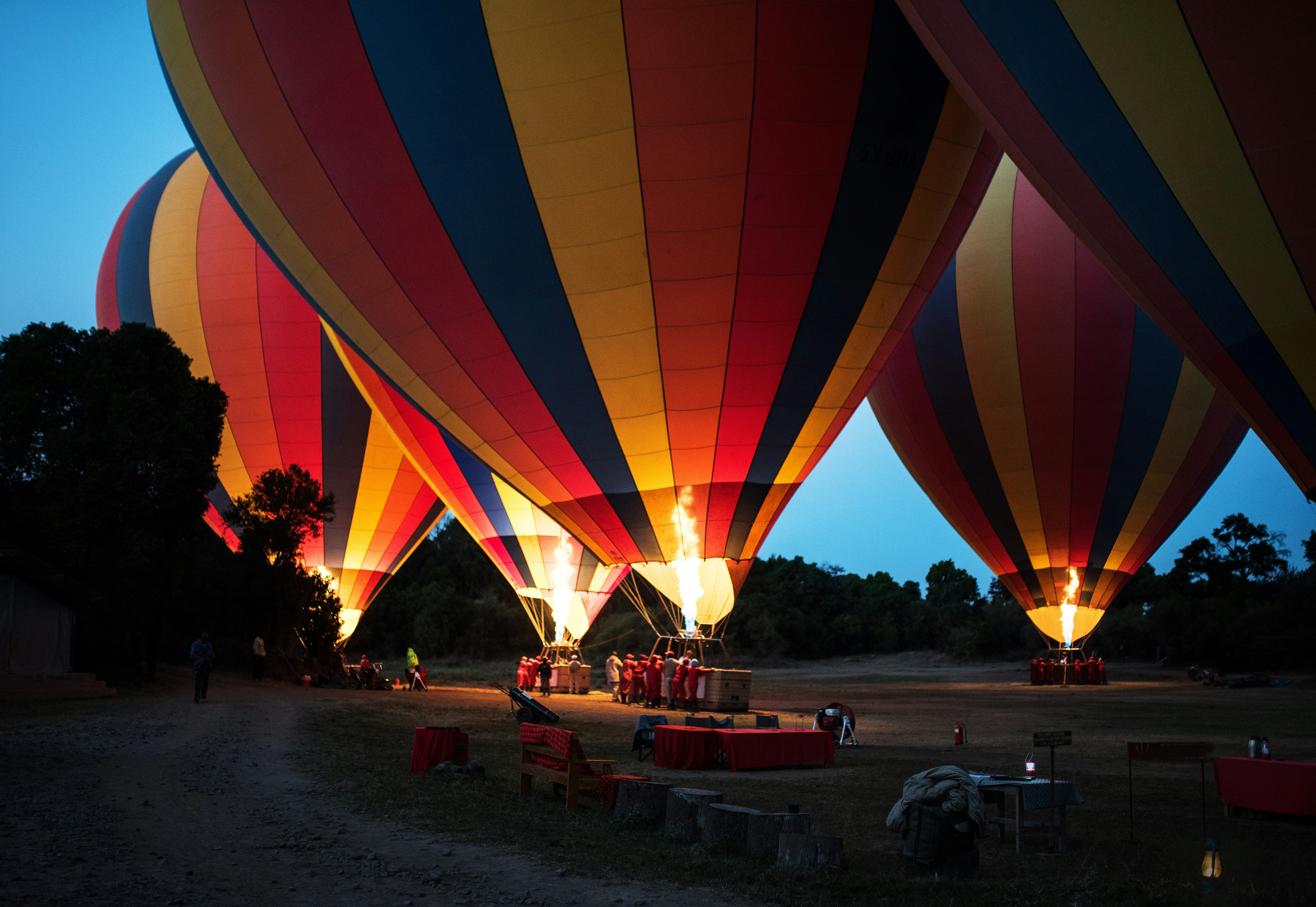
An African safari is not just a holiday; it is a life-changing experience that brings you back to nature in its most natural state. Just imagine, waking up to the sound of lions in the distance, seeing herds of elephants crossing the golden plains or silently witnessing a leopard pouncing on its prey. This is the magic of Africa’s wilderness - raw, unspoilt and unforgettable.
Would you like to experience the untamed beauty of Safari with rare the opportunity to see iconic wild animals like the lions, elephants, rhinos and cheetahs in their natural environment and not in the Zoo or on the documentary?
The Serengeti-and the excitement of the Great Migration, the Masai Mara-its vast open spaces, and Botswana’s Okavango Delta-its untamed beauty are all spectacularly unique.
An African safari is not only about animals; it is indeed a journey through vibrant cultures of ancient landscapes, and a slower, more grounded way of living. From sundowners under baobab trees to stories shared around campfires, it is a soulful and simple experience.
Safaris also support conservation efforts and help local communities. These fragile ecosystems are preserved and wonderful the local people live the same time through every responsible trip.
In a world that’s increasingly digital and fast-paced, an African safari reminds you of life’s natural rhythm. It offers peace, perspective, and awe—making it not just a trip, but a story you’ll carry forever.

Whether it’s your first or your fifth, a safari will always feel like your first real adventure.
Going on an African safari is an experience unlike any other—where you wake up to the sound of lions roaring, watch as elephants bathe in the river at sunset, and witness the thunder of thousands of wildebeests crossing a crocodile-filled river. If you had to choose, would you go to Kenya's Masai Mara or Tanzania's Serengeti, two of Africa's most iconic safari destinations?
It's true, both are very good and both are part of the same vast ecosystem. But the Masai Mara and the Serengeti offer different things that may weigh in depending on your taste, time and travel style. Let's look at a complete comparison of the Masai Mara and the Serengeti to help you make a decision that will perfectly suit your safari dream.
1. Geography and Ecosystem
Masai Mara is located in the southwest of Kenya, and is part of the larger Mara-Serengeti ecosystem. There is about a 1,510 square km space there. That's 580 square miles and it's small but still so rich with wildlife.
The Serengeti stretches across northern Tanzania, enveloping some 30,000 square kilometres (12,000 square miles) along with the surrounding reserves. From short grassy plains to riverine forests, woodlands and hills, it is immense, diverse and dramatic.
The Verdict
In terms of Masai Mara, the size of the park makes it easier to spot game as well as for it to be seen often, but when it comes to the Serengeti, the diversity and vast open spaces are unbeatable.
2. The great migration
This is an amazing event, which is shared by both the Masai Mara and Serengeti. Over 1.5 million wildebeest, with hundreds of thousands of zebras and gazelles, migrate in a circular loop in search of fresh grazing.
The Serengeti hosts the Great Migration annually from mainly November to July. The calving season in the southern Serengeti (around Ndutu) comes around from January to March, which brings out the predators and any action-packed action that is actually thrilling to watch.
From July to October, the Masai Mara is brought alive with the migration, as wildebeest cross the Mara River with crocodiles swimming under them.
The Verdict
The Masai Mara wins courtesy of its dramatic river crossings while the Serengeti wins for allowing you a longer time to witness the migration as well as the calving and predation.
3. Wildlife viewing
I recommend checking out to view the wildlife. Both parks have a lot of wildlife, including the Big Five animals; what can you see here?
The Masai Mara is a popular spot for the highest number of predators like lions, and its small area makes it much easier to see a wide range of animals in a short period of time.
The central Serengeti (Seronera Valley) is particularly good for year-round sightings, especially of leopards and cheetahs. Serengeti has more varied terrain and ecosystems, which support different species.
Verdict
The Masai Mara offers more accessible sightings, while the Serengeti has a true wilderness feel and a variety of wildlife.

4. The safari Experience
Imagine yourself on a game drive in the Masai Mara. It's your first time, or you're just passing through and have limited time, and there are short distances to cover between sightings in the Masai Mara.
In the Serengeti, you may need to drive a little further to find the action, but the payoff is a completely “Out of Africa” experience with fewer cars around you, particularly in the less travelled areas.
Guiding and Lodges: You have a lot of choices here, from budget-friendly camps to ultra-luxury lodges. In the Mara, you'll find more camps concentrated in smaller areas, but in the Serengeti you'll have more space to yourself—especially in private concessions.
Cultural Experiences: The Maasai Mara is home to the Maasai people, and many safaris include visits to local villages. The Serengeti region includes both Maasai and other ethnic groups, but cultural experiences tend to be more tourist-focused unless pre-arranged.
Verdict
Which one would fit your plan of a compact, high-impact safari with cultural depth and which one offers off-the-beaten-path luxury and solitude?
5. Accessibility and travel logistics
Masai Mara is quite accessible; you can drive from Nairobi (it will take approximately 5 to 6 hours) or you can opt for a short flight (45 minutes).
It's a bit remote out in the Serengeti. From Arusha, most people do fly to airports inside the park. You can drive yourself but it's long (6 to 8 hours) and the roads are usually pretty rough.
People often decide to visit both Masai Mara and Lake Nakuru, Amboseli, or the Kenyan coast. Likewise, individuals frequently decide to visit Serengeti and Ngorongoro Crater, Tarangire, and Zanzibar.
Verdict
Masai Mara is the best choice for simplicity and less travel time. If you want a more adventurous trip with added beaches, Serengeti is better.
6. Best time to go?
July to October is the height of the migration in the Masai Mara. Wildlife is found in abundance all year round, but fewer tourists come from November to June.
Migration in the Serengeti is spread out across the year with different events having particular peaks: calving from December to March; crossings in the western corridor from June to July and in the north from August to October.
Verdict
Both places are filled with amazing animal watching opportunities all year, so which one you choose might depend on which part of the migration you want to witness.

7. Crowds and conservation
More and more people are coming to the Masai Mara. Especially during the migration season the main reserve is very crowded. Sometimes, up to 20 vehicles can surround one sighting.
Serengeti is so big that it won't feel crowded with tourists. You may go hours without spotting another vehicle in some areas. In the northern and eastern regions, exclusive safari options, complete with minimal vehicle allocations, are available in private concessions.
But there are still many areas where populations are declining – especially in the Lake Victoria Basin, where populations are declining from heavy pressure.
Verdict
Based on the verdict, would you prefer Serengeti for privacy and untouched landscapes or Masai Mara for a livelier, more social safari vibe?
Final Verdict
It's a tough choice selecting betwen the Masai Mara and the Serengeti; both are amazing. You will never forget the safari experience that you will have there. The Masai Mara can bring about a compact and thrilling adventure. It is one of the best places to visit if you want to see predators and have easy access. Beginners who are going on a safari and are also in a hurry to go through the adventure would find it to be the right choice. It’s perfect for first-time safari-goers, those on a tighter schedule, or anyone wanting to witness the thrilling Mara River crossings during the migration season.
If you desire wide open wilderness, fewer crowds, and the Great Migration year-long, the Serengeti is perfect for you. This is also the perfect place for experienced travelers, wildlife photographers and lovers of nature.
In a world that’s increasingly digital and fast-paced, an African safari reminds you of life’s natural rhythm. It offers peace, perspective, and awe—making it not just a trip, but a story you’ll carry forever.
In the end, both destinations are really part of the same heartbeat of Africa and the same incredible ecosystem. No matter which you choose, you can't really go wrong – but if you can manage it, experiencing them both will give you the ultimate safari story. You will come back from either place full of dust in your boots, wonder in your heart and memories that will last a lifetime.
Whether it’s your first or your fifth, a safari will always feel like your first real adventure.The better safari destination to choose truly depends on what you want.






